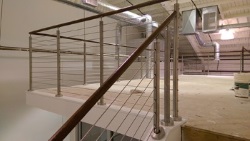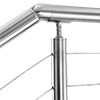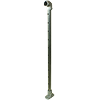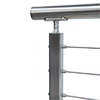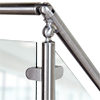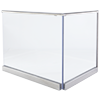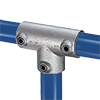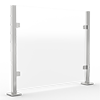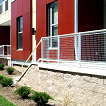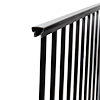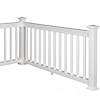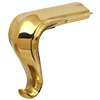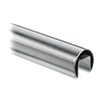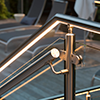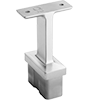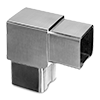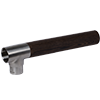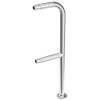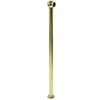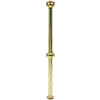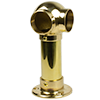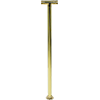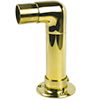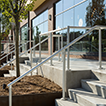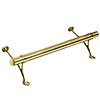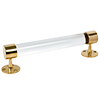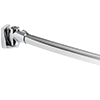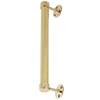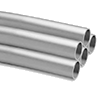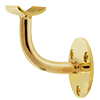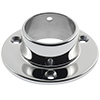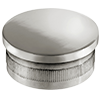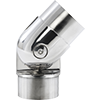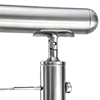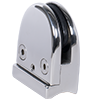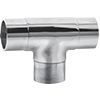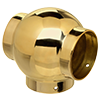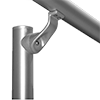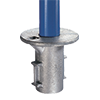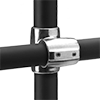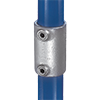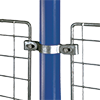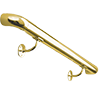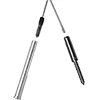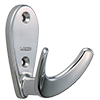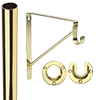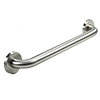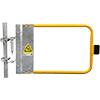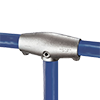Shower Grab Bar Installation Guide
Adding additional safety and accessibility to your commercial shower facilities is never a bad idea. The Americans with Disabilities Act of 1990 (ADA) is a civil rights law that prohibits discrimination based on disability.
By providing your customers with the proper assistance, you can be in compliance with ADA requirements that allow for anyone to use your facilities.
The importance of shower rails for elderly people can not be understated, including in both residential and commercial applications.
According to the CDC, 81% of bathroom injuries in the U.S. are caused by falls. This can usually be avoided by installing a shower grab rail.
Installing shower grab bars for elderly people is a quick and simple way to ensure your customers or loved ones are taken care of.

If you are wondering about how to install shower grab bars and the ADA requirements associated with them, keep reading below.
ADA Shower Grab Bar Requirements
Commercial shower facilities require grab bar installation to be in compliance with ADA requirements and provide accessibility to everyone. The 1990 act clearly outlines the size, shape, and other requirements of grab bars to be used in public shower facilities.
After consulting this information, you should have no question about where to put grab bars in shower facilities.
The diameter of a grab bar must be between 1.25 and 2 inches. A safety handrail for shower facilities must have a weight-bearing capacity of 250 lbs and must have a 12 inch clearance above it.
If you have a transfer-type stall, you will need an L-shaped bar. On the wall where the faucets and controls are located, the L-shaped grab bar must be installed. If an L-shaped bar is not available, two straight grab bars may be installed in close proximity to create an L-shape.
In a roll-in, stall-type shower, there are a few options. If there is a seat provided in the shower, then there only needs to be two grab bars provided. One of the bars will be installed on the back wall, while the other should be installed on the sidewall that is opposite from the seat. No grab bar should be provided above the seat, as this would get in the way.
If there is no seat provided, then a U-shaped bar will need to be provided along the three walls. If a U-shaped bar is unavailable, feel free to use three single grab bars in close proximity to each other.
Residential homes are not required to install a shower grab bar, so the standard shower grab bar height is not defined. However, grab bar placement in walk in shower facilities at home should still follow the guidelines set forth by the ADA when applicable. A walk in shower with grab bars at home provides a high level of safety, even if it is not required by law.
Where to Place Grab Bars in Shower
In order to determine shower grab bars placement, you should also consult the guidelines provided by the ADA.
There are a few different types of shower facilities that require slight differences in the placement of grab bars. When determining where to install grab bars in shower facilities, make sure you are consulting the measurements for the correct type of shower.
In a transfer-type stall, the recommended ADA shower grab bar height is between 33 and 36 inches from the shower floor. The grab bar needs to cover the full length of the wall with shower controls and should run along the back wall at least 18 inches from the faucet wall. There should be a gap between the bar and the wall of at least 1.5 inches.
In a roll-in, stall-type shower, the shower height needs to be between 33 and 36 inches from the shower floor. There should be a gap between the bar and the wall measuring at least 1.5 inches. Stall-type showers should have their grab bars installed at a maximum of 6 inches from adjacent walls.
How to Install Shower Handrail
Shower grab bar installation is a relatively simple task. If you have ever hung a shelf or handrail, then you probably have a good idea of how to install shower bar rails.
Using the information above, mark out where the shower handrail installation will occur.
Using a standard drill bit, drill a pilot hole for each of the mounting screws that were included with your handrail. If attaching to a stud, then you can directly attach the mounting flange to the wall.
Otherwise, use wall anchors to provide the weight-bearing capacity necessary for bathroom shower grab bars. Slide the covers over the mounting flanges and give your new grab bar a test to ensure it is well-attached.
How to Install Grab Bars in Tile Shower
Installing grab bars in tile shower facilities only requires one extra tool. Rather than trying to drill through the tile with a standard drill bit, you will need masonry or carbide-tipped bit.
This will give you the extra strength you need to drill through the tile. After the hole is drilled, the remaining steps are the same as above.
Conclusion
Installing shower bars for safety will put your customers’ and family’s minds at ease. Using the information above, it should be simple to determine the correct ADA shower grab bar locations and how to install shower grab bars.
If you don’t feel comfortable installing them yourself, it is always a good idea to consult a professional.
Shower bars for elderly and disabled people allow everyone to enjoy your facilities in a safe manner.
Additionally, the stainless steel shower grab bars available from BuyRailings.com will last for years, won’t rust, and are easily cleaned. Never settle for less than the best when it comes to the safety of others.
If you are looking for high-quality ADA compliant shower grab bars, BuyRailings.com has you covered.
We provide a wide variety of rods and railings, including shower assist bars and ADA shower bars.




